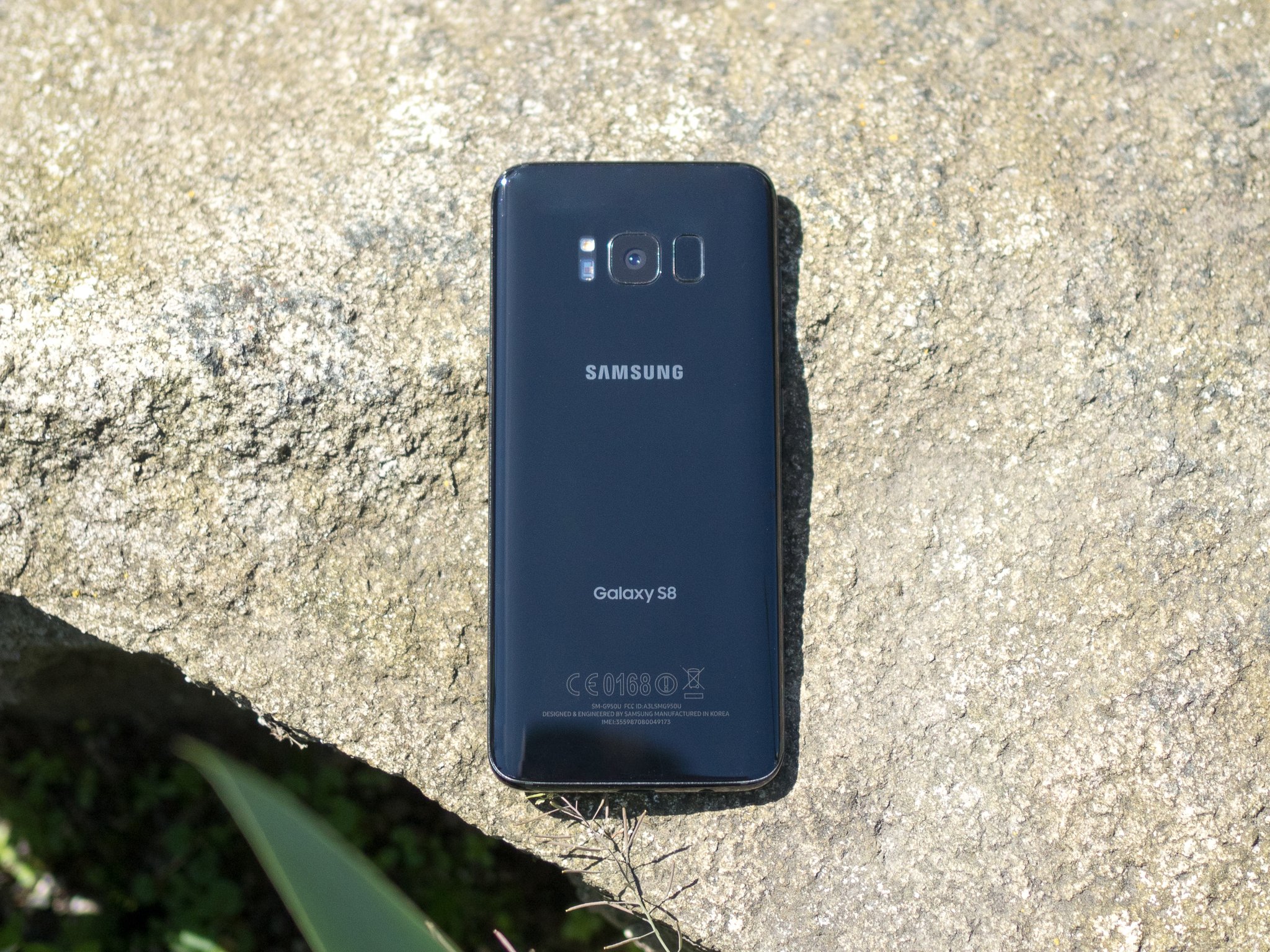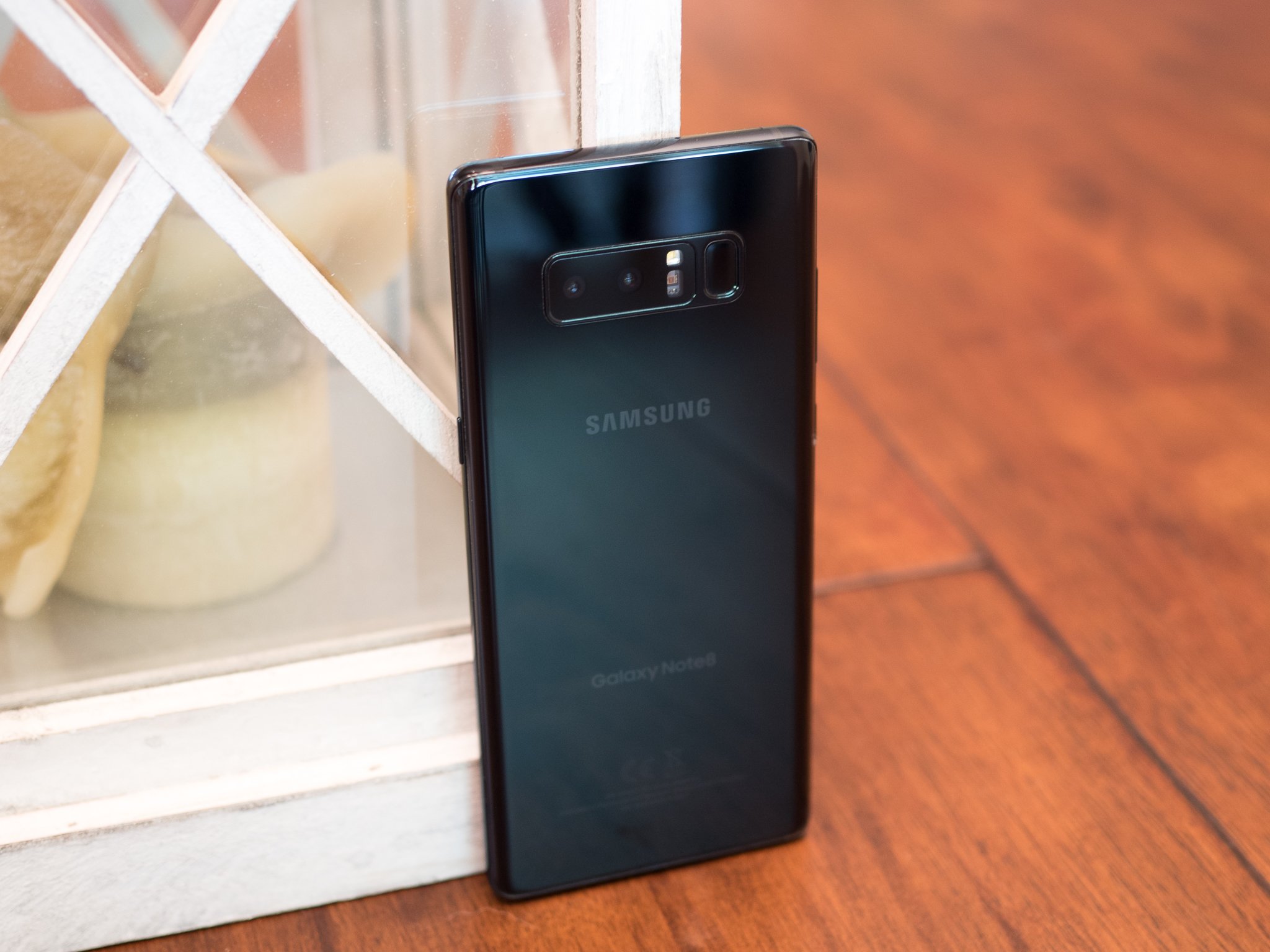Best overall
Samsung Galaxy S8
See at Verizon See at AT&T See at T-Mobile See at Sprint See at Best Buy
The Galaxy S8 has slick hardware with tiny bezels that let it have a big screen in a small body, but inside it still offers everything you want: a high-end processor, lots of storage, an SD card slot, full waterproofing and a top-end camera.
Yes the fingerprint sensor is slightly awkward to use, but the GS8's iris scanner is dramatically improved to make up for it. And it only takes one look at the industry-leading display to start to forgive Samsung's decisions on the back.
Though its software can be a little overwhelming to novices, you can't argue that Samsung continues to pack in hundreds of features to a single phone, making sure there's something in here for everyone's needs. Samsung continues to take this approach of offering more more more with just a few compromises — and it continues to work.
Bottom line: The Galaxy S8 gives you piles of features in a beautiful body, and is a great choice for a wide range of potential buyers.
One more thing: You can always pay a little extra and get the larger Galaxy S8+ for a bit more screen and battery life.
Why the Galaxy S8 is the best
Samsung's Galaxy S brand carries considerable weight in the mobile world, and the Galaxy S8 continues to both leverage that brand while also offering a fantastic overall smartphone experience that today's consumers want. Once again, Samsung took its core principles of great hardware, a top-end display, waterproofing, solid cameras and mounds of features and updated it all for 2017.
The result is a fresh design that shrinks down the display bezels and really smooths out all of the sharp edges to give you a sleek, thin phone with a really large display that doesn't feel that large. The extra-tall 18.5:9 aspect ratio comes in at 5.8-inches across on the Galaxy S8 and 6.2-inches on the Galaxy S8+, and in both cases feels quite a bit smaller than the numbers would lead you to believe.
The sleek body still packs in top-end specs, of course, starting with that magnificent Super AMOLED display and backing it up with a Snapdragon 835 or Exynos 8895, 4GB of RAM, larger 64GB of storage (plus an SD card slot), a new USB-C port and locking it all down with waterproofing. The batteries are no bigger than last year's models, but battery life hasn't taken any hit. On the other side of the hardware, there's one big downside: Samsung moved the fingerprint sensor to an awkward position on the back next to the camera, leaving you with the less-consistent and less-convenient face scanning and iris scanning instead.
Samsung continues to make phones with all of the design and features people are clamoring for.
The camera experience has actually changed more on the front than the back with a new 8MP unit that packs auto focus. But the 12MP rear camera is still no slouch — Samsung has improved its processing to get even more out of this setup, and it remains a competitor for the best overall smartphone camera out there.
The ongoing point of contention when it comes to Samsung phones is the software, and that's the same once again on the Galaxy S8. Samsung continues to put in a massive number of features without removing any from years prior, leaving you with lots of things to get in the way and confuse you when you're trying to get the basics done. On the other hand, it's hard to find someone who can't get done what they need to get done right out of the box on this phone. It truly is aimed at being relevant to as diverse a set of consumers as possible, and it succeeds on that point.
By putting up with a few of the out-of-the-box quirks and taking some time to set it up how you like it, the Galaxy S8 can do anything you want and get it done at a fast pace while looking great as well.
Best with big screen
Samsung Galaxy Note 8
See at Verizon See at AT&T See at T-Mobile See at Sprint See at Best Buy See at Amazon
Take everything that makes the Galaxy S8 great, and scale it up — that's what also makes the Galaxy Note 8 compelling. A very familiar glass-and-metal body is wrapped around a larger 6.3-inch display, but a panel that's even better in terms of brightness and colors.
For this top-dollar phone you'll find top-end specs, great performance and super-capable software. Plus a new dual camera setup that offers you 2X zooming without losing resolution and a new "Live Focus" mode that mimics the background blur of a professional camera. None of the camera changes come at a cost of reduced primary camera quality, either.
Then you get the S Pen, of course, offering fine input, drawing abilities and new productivity tricks you simply can't get from any other phone out there. The stylus isn't for everyone, but you'll find plenty of people who swear by its capabilities.
Bottom line: For the biggest, most powerful and most capable phone Samsung makes, look no further.
One more thing: Be ready to spend the big bucks — the Note 8 is far and away Samsung's most expensive phone ever at nearly $1000.
Best mainstream alternative
LG V30
See at AT&T See at Verizon See at Sprint See at T-Mobile
LG's V series has traditionally been a big and brawny phone, but in 2017 the V30 is just a great overall device that has handily taken over from the G6 launched earlier this year. It stuck with a metal-and-glass build, but slimmed down the sides and integrated subtle curves to make it rather easy to hold despite a 6-inch 18:9 display on the front.
Internally you get top-notch specs you'd expect from any flagship, and around back LG continues to impress with a fantastic pair of cameras. The standard shooter does really well despite its small pixels, and the secondary wide-angle camera is the best implementation LG has ever made. It offers an extremely unique perspective you just don't see anywhere else.
LG's software is capable and smooth, if still a bit clunky and uncoordinated in a few areas — but that can still be said about most phones nowadays.
Bottom line: LG does all of the basics amazingly well, and accents it with a nice body and super-capable pair of cameras.
One more thing: The V30 isn't yet widely available in Western markets, but we expect it to hit store shelves early in October.
Best for simplicity
HTC U11
See at Amazon See at HTC See at Sprint
HTC is back at the top competing with the big names after a few years where its flagships just weren't up to speed. The HTC U11 is a great overall phone that has followed many industry trends and also executed really well on them. And it does so without a bunch of unnecessary hardware or software additions — it just focuses on the core features.
When viewed from the back you get a beautiful shining glass construction that's truly unique. Around front it's a bit more boring, but the 5.5-inch QHD display is strong — and the fingerprint sensor is sensibly located below the screen.
The best example of HTC turning things around is its camera — the 12MP sensor gets all the hardware right, and also has the processing to take best-in-class photos.
Internally you get all of the right stuff, with a Snapdragon 835 processor, 4GB of RAM, 64GB storage, a big-enough 3000mAh battery and complete waterproofing. The one thing missing? A headphone jack on the bottom.
Bottom line: The U11 is a great all-around phone at a reasonable sub-$650 price that should definitely be considered in the same realm as other high-end options.
One more thing: This is the only phone on this list without a headphone jack — be ready to use Bluetooth or the included USB-C adaptor.
Best for keyboard
BlackBerry KEYone
See at Amazon See at BlackBerry
The market for phones with a physical keyboard may not be as large as it once was, but BlackBerry Mobile's KEYone has reinvigorated the market. Not only does it offer a best-in-class effiency through its ample 3505mAh battery and power-sipping Snapdragon 625 chip, but its keyboard feels like it's straight out of the old BlackBerry Bold — in a good way.
Bottom line: BlackBerry is back with a phone that feels just as comfortable in the Android world as it did in the BB10 world.
One more thing: The KEYone has a pretty great camera that's underappreciated in the marketplace.
Conclusion
For most people, the Galaxy S8 will serve as the best possible choice with its excellent design, top-end hardware, great camera and piles of software features. It's hard to go wrong with this phone, whether you're choosing the Galaxy S8 or the larger Galaxy S8+.
Best overall
Samsung Galaxy S8
See at Verizon See at AT&T See at T-Mobile See at Sprint See at Best Buy
The Galaxy S8 has slick hardware with tiny bezels that let it have a big screen in a small body, but inside it still offers everything you want: a high-end processor, lots of storage, an SD card slot, full waterproofing and a top-end camera.
Yes the fingerprint sensor is slightly awkward to use, but the GS8's iris scanner is dramatically improved to make up for it. And it only takes one look at the industry-leading display to start to forgive Samsung's decisions on the back.
Though its software can be a little overwhelming to novices, you can't argue that Samsung continues to pack in hundreds of features to a single phone, making sure there's something in here for everyone's needs. Samsung continues to take this approach of offering more more more with just a few compromises — and it continues to work.
Bottom line: The Galaxy S8 gives you piles of features in a beautiful body, and is a great choice for a wide range of potential buyers.
One more thing: You can always pay a little extra and get the larger Galaxy S8+ for a bit more screen and battery life.
Update, September 2017: The Galaxy S8 stays at the top of the list. The LG V30 has replaced the LG G6, and the Note 8 has been added as a top-end stylus-toting option. The Pixel XL has been removed on account of the Pixel 2 XL's launch on October 4.







0 Response to "You Can See More: Best Android Phones of 2017"
Post a Comment